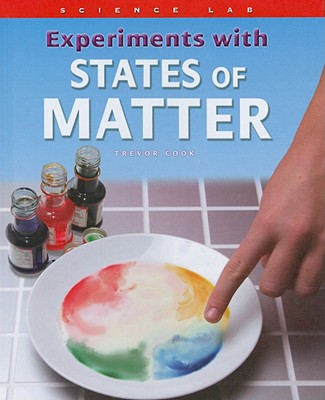

After that time, the liquid should turn into a solid for a delicious treat. Then SHAKE! Students can take turns shaking as this experiment can take up to ten minutes of shaking. Place the smaller bag into a larger one filled with ice and the Kosher or rock salt. Pour the mixture into a small Ziploc bag. Combine the vanilla extract and half and half. Who doesn’t love ice cream? No matter what time of year, this is a fun activity to show your students how temperature can affect the state of matter.īefore the states of matter experiment, have a discussion with students about the characteristics of each substance and which state of matter it falls into. States of Matter Experiment #3 Ice Cream in a Bag: Even though the materials are simple, students love this activity. This activity is fun because it shows students how substances can change their state of matter over time.

When the can is sprayed, the shaving cream is released as a solid, which eventually condenses to a liquid. When in a can, the shaving cream is a mixture of soap and water compressed as a gas. The science behind the experiment: Shaving cream is a unique substance because its characteristics do not neatly fall into a solid, liquid, or gas category. If you have magnifying glasses, you may want students to use them to try to get as close a look as possible.Īfter students have had time to observe, allow them to hypothesize which state of matter they think shaving cream falls into. Allow students to observe the shaving cream up close. This activity is also reasonably easy however, it will take several days for students to fully process their observations and inferences.įor this activity, you will put a blob of shaving cream on each student’s paper towel. Shaving cream is a peculiar substance as it can be difficult to distinguish whether it is a solid or a liquid. States of Matter Experiment #2 Shaving Cream: Once the bubble pops at the surface, the raisin then falls to the bottom again. This causes the raisins to float to the top. What is happening in the carbonation gas from the soda adheres to the raisin. The raisins will fall to the bottom of the glass and then float back up to the top. The science behind this experiment: Students will see the raisins “dancing” in the soda.

#Simple states of matter experiment full
To perform the activity, fill the glass 3/4 full of the clear soda. This simple states of matter experiment will allow students to see how solid, liquid, and gas substances react. How much fun is it to dance? While it might be difficult to throw an upper elementary science dance party, making your science experiment dance doesn’t have to be as hard. States of Matter Experiment #1 Raisins Dance: Read about five easy activities that you can incorporate into your states of matter unit.įive Hands on Activities to Teach States of Matter Including hands on activities does not have to be complicated. If you do not include science experiments in your states of matter unit, your students miss this critical part of the scientific process.

Still, to test their knowledge, they should experience hands on activities that allow them to see how the three states of matter interact with one another. Most students know and can identify the three states of matter in isolation. Are you using states of matter science experiments? Matter has three states solid, liquid, and gas.


 0 kommentar(er)
0 kommentar(er)
